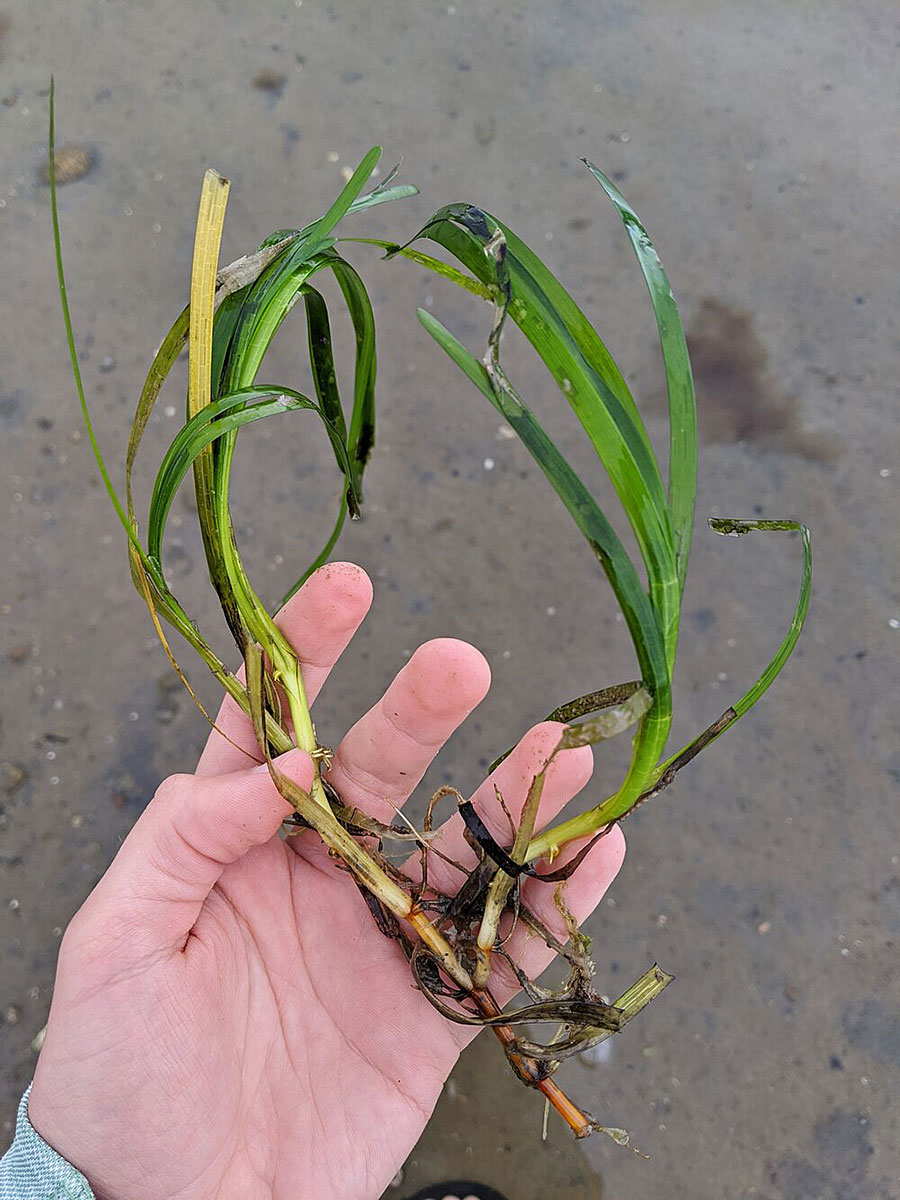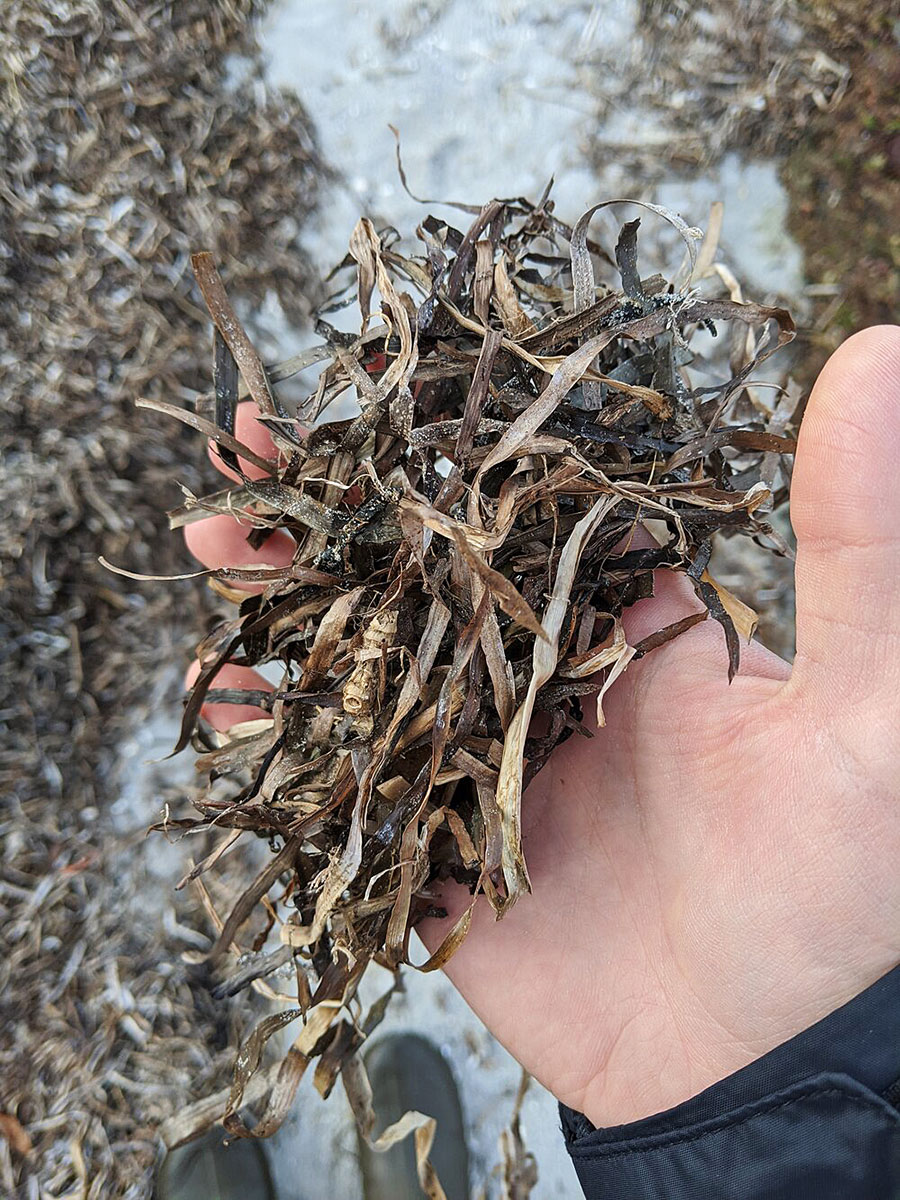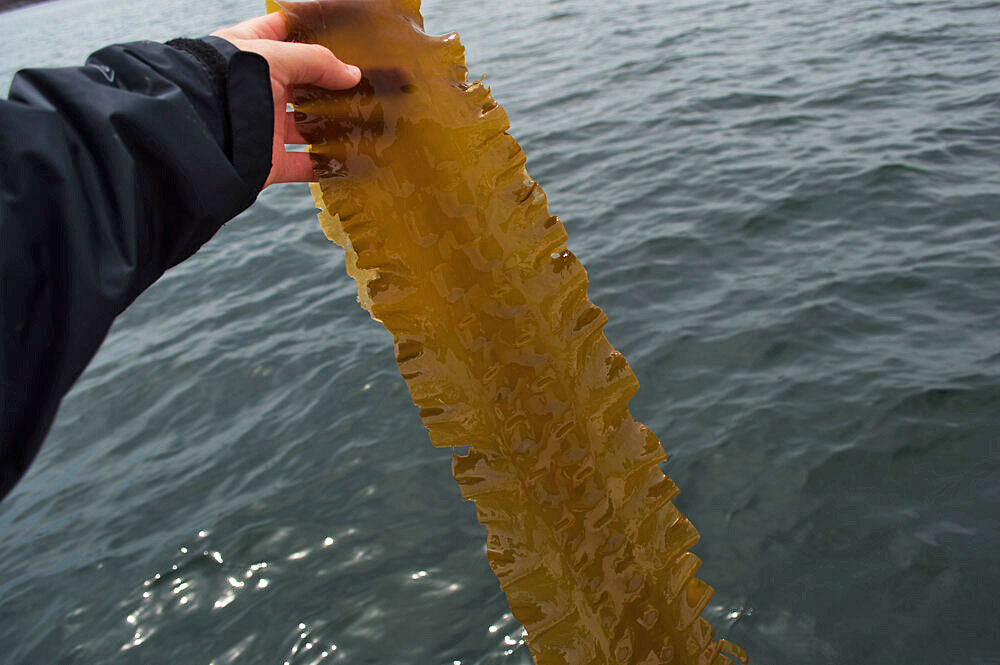FISM: Eelgrass vs. Algae
October 1, 2020
By Connor Jones, FISM Coordinator
fishersislandseagrass@gmail.com
You are walking on the beach on a breezy fall day and come across something thin, green and plant-like washed up on the beach. You know it came from the ocean, but how do you tell if it is a plant or a type of algae?
The most common marine plant species you will find washed up on a Fishers Island beach is eelgrass (Zostera marina). Eelgrass is a true, flowering plant that has evolved to live in saltwater. Its closest land-plant relatives include grasses, palms and lilies. Like many plants we see on land, eelgrass has roots which it uses to anchor itself into the sand or mud and absorb nutrients. In addition to roots, eelgrass also has rhizomes (thick, underground stems that grow horizontally) which also aid in stability and growth. Common examples of rhizomes include fresh ginger and turmeric. Eelgrass also has long, thin leaves that are bright green, used to capture energy from the sun for photosynthesis. Around Fishers Island, eelgrass has been found growing to lengths of 5 feet! Eelgrass washed up on the beach may still have its roots attached, or you may just see individual leaves that look like bright green ribbons. Wet eelgrass tends to feel like a sturdier version of the blades of grass you may find in a backyard or park. Dead eelgrass that has dried out in the sun turns dark and brittle.
Left: An eelgrass plant that has washed ashore. Right: Dead eelgrass that has dried in the sun
Eelgrass is a single species of marine plant – one of just two species found in Long Island Sound – but there are dozens of different types of algae that you might encounter as you walk along the beach. Generally organized into categories based on color (green algae, brown algae and red algae), other common names for marine algae include kelp, seaweed, rockweed and wrack weed. Some species, like sugar kelp (Saccharina latissima), can grow incredibly large – up to 12 feet long! Other species, like the bright green sea lettuce (Ulva lactuca) can be extremely thin and look and feel like a plastic bag, while others can be thick, appearing more like flexible pieces of rubber (sugar kelp, sea colander, oarweed).
Top row left to right: Sea Colander, Ascophyllum nodosum (knotted wrack)
Bottom row left to right: Gutweed, Sugar Kelp
Both plants and algae use the process of photosynthesis to absorb carbon dioxide from their environment and use the sun’s energy to convert that carbon into sugar and oxygen. But unlike eelgrass, algae are not plants. Algae lack the specialized tissues (known as xylem and phloem) that plants use to transport water and nutrients. Instead of leaves, algae have blades (sometimes the leaves of grasses are referred to as ‘blades’, however the term ‘leaf/leaves’ is never used for algae and seaweed). Algae do not have root systems like eelgrass. Instead, algae have holdfasts which they use to anchor themselves to rocks, shells, debris and other hard substrates. The holdfast does not aid in nutrient absorption like roots; algae absorb nutrients from the water directly through their blades. You may find holdfasts of some of the larger species of kelp still attached to mussel shells and rocks on the beach.
Although they are different organisms, both eelgrass and algae are incredibly important to our coastal marine ecosystems because of their ability to oxygenate the water, dampen wave energy and provide habitat for hundreds of other species.
If you find something on the beach and want to learn more about it, feel free to reach out and send a photograph to the FISM Coordinator, Connor Jones (fishersislandseagrass@gmail.com).







